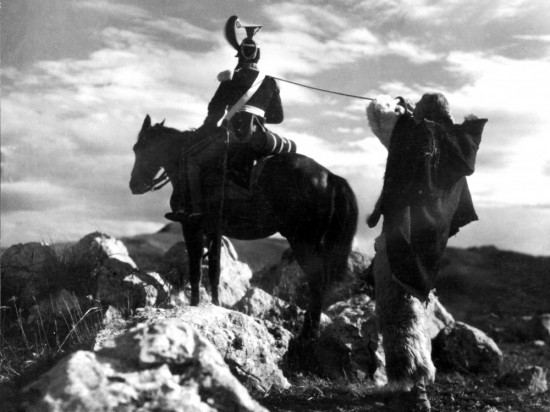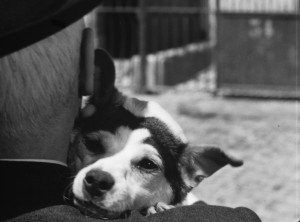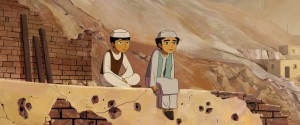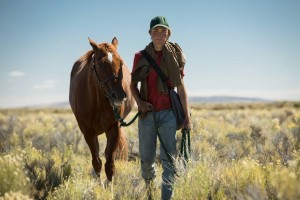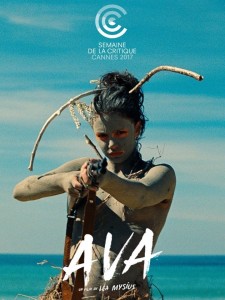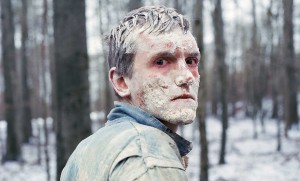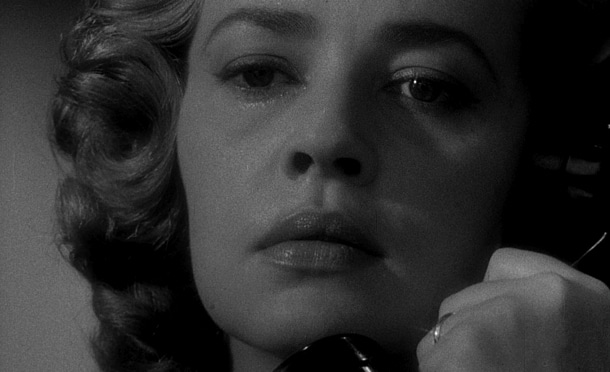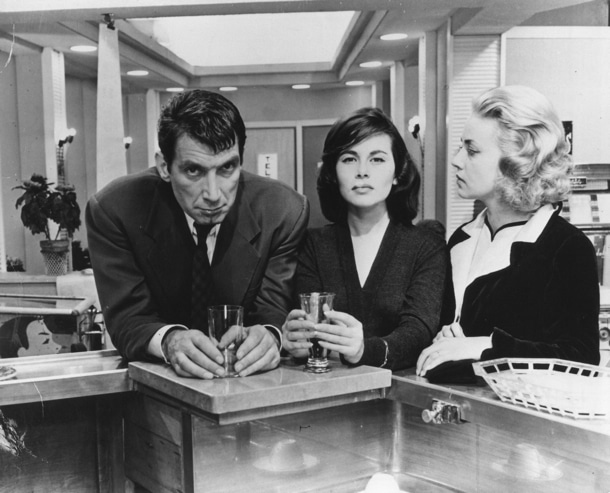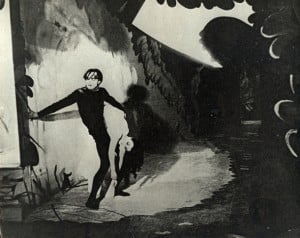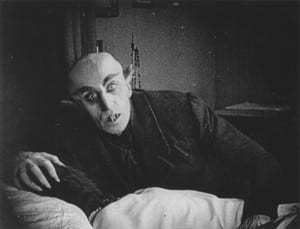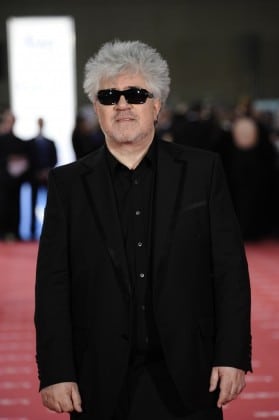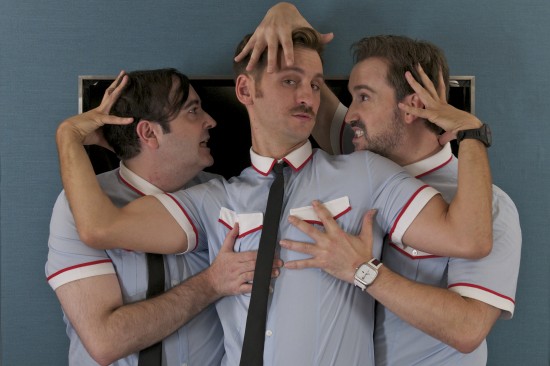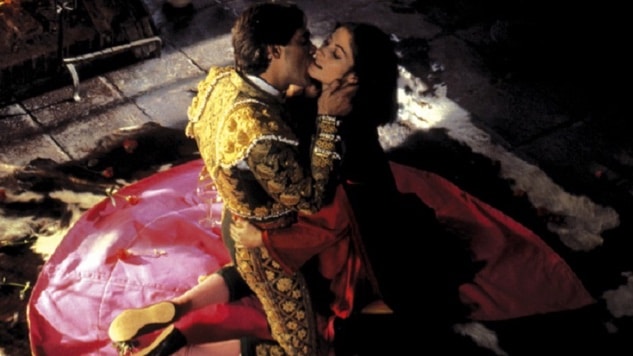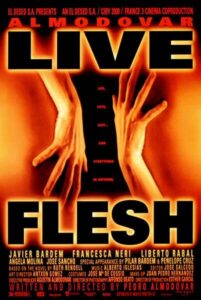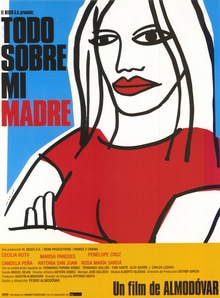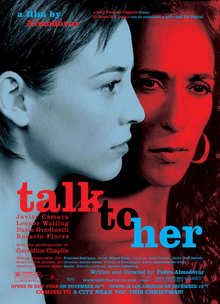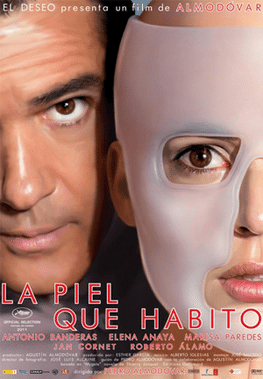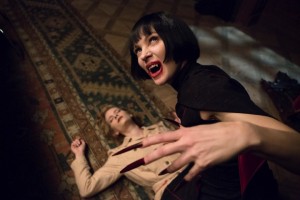
Born in 1939 in Warsaw, Poland, Krzysztof Zanussi is s documentary and feature film director. He studied Physics and Philosophy at University and graduated from Lodz Film Academy in 1966. Member of the jury at the Venice Film Festival in 1981. Member of the jury at the Sundance Film Festival in 1986.
We recently talked to Krzysztof whose latest film FOREIGN BODY was released in 2015. A retrospective of his films is currently showing on MUBI.
F Let me first say how much I enjoyed ILLUMINATION (1973) I take it you didn’t have any issues with the censors on this film?
KZ Oh, but yes I did. There was a whole scene cut from it. In the original film, there was a scene of university demonstrations, from 1968, where the students demonstrated in support of their tutors. I wrote it in and got it past the script censor, because it is easy to disguise things in a script, but then the film is screened in the Ministry of Culture too and then they make cuts. There still remains a still (photograph) of Retman demonstrating in the final film, which I argued to keep and anyone who knew those times would understand the context when they view the film.
F I understand ILLUMINATION isn’t autobiographical(?) but you were filming about things you knew about.. studying Physics as you did..
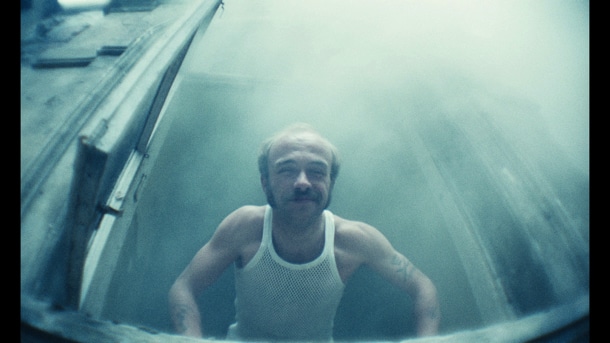 KZ Yes, my life is very different, the film does not reflect what was happening to me at all, but of course I knew Physics.. you meet a partner…
KZ Yes, my life is very different, the film does not reflect what was happening to me at all, but of course I knew Physics.. you meet a partner…
F Why did you study Physics?
KZ I studied Physics, as in fact the lead character Retman states in the film ILLUMINATION, because I felt I wanted something that was certain in life. Then I moved over to Biology, as many of us did then.. I did get interested in Genetics, right back then, at the start of things and could already see the great good it might potentially do, but also of course, the great bad too. My father used to say to me ‘don’t believe anything any tutor tells you, except the Maths and the Physics teacher’. I like Biology …and many other subjects, but they are all supposition and opinion.
F You have a very interesting look to ILLUMINATION your DoP was very good…
KZ: Yes, yes (Edward Klosinski); he was wonderful. He also shot The Promised Land. He passed away recently (2008).
F Wonderful film. Starts out like a Chekov play and then just opens out to something massive. You met at film school?
KZ Yes, we studied together.
F And the style.. it appears to me that you were juxtaposing a cinéma verité with a highly stylized form: something quite revolutionary then
KZ Yes, I had been very influenced by the French New Wave… I wanted a documentary feel for some of it; to make it feel real.
F And what did you shoot on?
KZ: 16mm blown up to 35mm. We always shot 16mm as it was much cheaper. We had access to Kodak Eastman stock, which we loved. We felt very lucky. With only a very limited ratio. We only had enough (film) for 1 or 2 takes, so if nothing went drastically wrong, you moved on.
F This must have been good for the actors.. focussing them too when there was a take..?
KZ: Well, of course the actors knew this was always the case, so… (they were used to it). One time I was working with a famous French actress and we did a couple of takes and we were moving on and she said ‘was that ok’? And I said ‘yes, of course’, because she wasn’t convinced… she had stumbled over a line, but she soon learnt how it was to film in Poland!
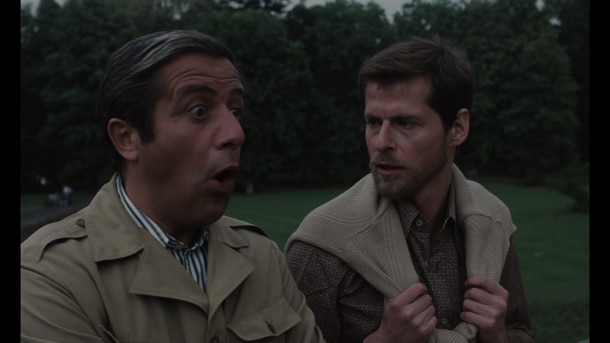 F: Also in the “Martin Scorsese Selects” strand, tell us about CAMOUFLAGE. How do you see this film in hindsight?
F: Also in the “Martin Scorsese Selects” strand, tell us about CAMOUFLAGE. How do you see this film in hindsight?
K.Z.: Well, CAMOUFLAGE is one of the about forty films I have directed, and they are all my dear children. And I can say, that I have not any favourites. But CAMOUFLAGE had a very strong resonance from the audience when it was shown, almost forty years ago. And today, I am told by the audience, that it has not lost any of its actuality. And I did hoped so much, that this would not be the case. But when I was young, I was more optimistic, I thought that opportunism and corruption were just part of this particular system we lived in, but now I know better.
F: Yes, one tends to blame the system for what is, unfortunately, human nature. What about THE CONSTANT FACTOR, from about in the same period, the two films only three years apart.
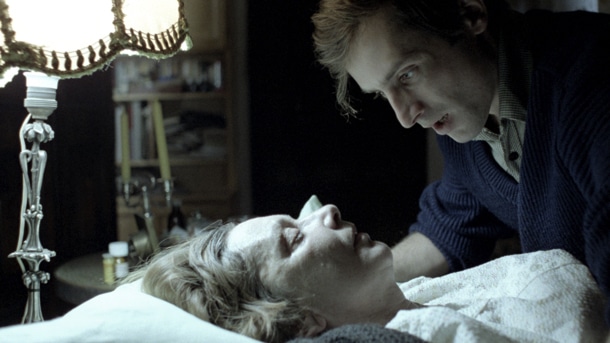 K.Z.: It is somehow the same topic, about an idealistic man, in a corrupt society, who tries to preserve his ideals. Which is very difficult, if you are not a hypocrite. Later on in life, I revised my ideas about this topic, and made a sort of sequel to the old film, five years ago, Revisited, even with some of the old actors. And I thought, I was much too hard in my judgement in CONSTANT FACTOR, not about the main character, but the people caught in the system. Because now, I can, see that the main character in the old film, which whom I identified at the time, is quite inhuman. He loves ideals, but not humans. Today I would be more tolerant towards human weaknesses. If I could speak for this main character in THE CONSTANT FACTOR, I would say now ‘sorry’ to my colleagues, I was too tough on you.
K.Z.: It is somehow the same topic, about an idealistic man, in a corrupt society, who tries to preserve his ideals. Which is very difficult, if you are not a hypocrite. Later on in life, I revised my ideas about this topic, and made a sort of sequel to the old film, five years ago, Revisited, even with some of the old actors. And I thought, I was much too hard in my judgement in CONSTANT FACTOR, not about the main character, but the people caught in the system. Because now, I can, see that the main character in the old film, which whom I identified at the time, is quite inhuman. He loves ideals, but not humans. Today I would be more tolerant towards human weaknesses. If I could speak for this main character in THE CONSTANT FACTOR, I would say now ‘sorry’ to my colleagues, I was too tough on you.
F So, going back, you studied Physics and then you went to Film School…
KZ I went to film school for three years and then they threw me out..
F How long is the course?
KZ Five years. But you see I was studying the Nouvelle Vague, I was on set with Claude Chabrol, Jacques Truffaut… seeing, learning from them how they made films… very fluid, without camera set ups and improvising with actors. Completely different from how we were taught at school. So I came back to film school and made my end of year film using these Nouvelle Vague methods before anyone.. my tutors.. knew what Nouvelle Vague was! So of course they failed me.
F Because you hadn’t used ‘correct’ camera set-ups and lighting and stuff?
KZ Exactly..
F So what did you do?
KZ Oh, well I had to take the year again effectively. And I understood I just had to make a film in the style my tutor wanted and I passed.
F I’m interested in what influenced you.. You were born at the start of the war.. do you remember much about it? Did it have an impact on you?
KZ Well, I of course made a few films about the war but not many..
F Yes, but I mean personally, did it affect you?
KZ Yes. Very much. I think. I remember walking down the street and the person walking next to me being shot dead and just carrying on walking, knowing that person was dead and would be buried in a few hours. You always remember these things. But the death of animals had a bigger impact than the death of humans.
F What do you mean?
KZ I saw a horse hit by napalm. On fire and you couldn’t tell what was… And a dog.. we were passing by this tall building and there was a fire on the first floor, but up on the fifth floor, on the balcony was a dog and I knew the dog was going to die. That no one was going to put the fire out.
F So, even though you didn’t actually see it happen, see it die, the knowledge that this dog would die in an hour or so..
KZ Yes, exactly. It made a big impact on me.
F What inspires you to make films? You must have been asked this question many times over the years.
KZ Many times.. yes and I have stock answer… but.. Fear. Fear is a great motivator.
F Fear of what?
KZ Fear of many things. Of being lonely… of not connecting with people. I mean, you wouldn’t be sitting here, we wouldn’t be talking, if it wasn’t for the fact that I have made films.
F True..
KZ Fear of not achieving anything. It stopped me being stuck in myself; Got me out there and allowed me to test my version of humanity and ask others whether they saw or felt the same things. How others receive a film is always different.
F Because people bring with them their own filter, their own baggage through which they view the film. When you make a film, it becomes something else, something separate to you, that somehow belongs to others too. You have to let it go.
KZ Exactly. And it is notable sometimes with different countries how they perceive a film. I had a retrospective in Thailand and there the metaphysical aspects of the characters problems didn’t interest the audience at all, but his situation was everything. They related to that, but not at all to the other. But you can’t tell them what your film is about.
F Where else have you been with your films?
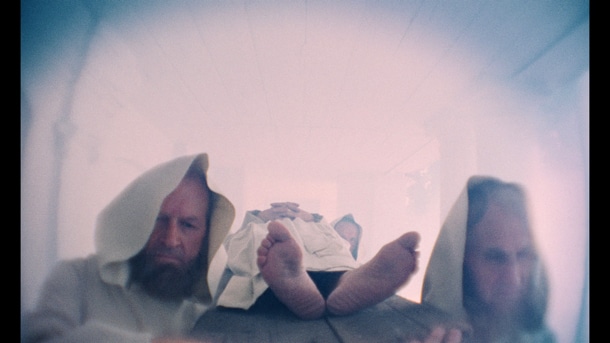 KZ Not much to the US or China or Russia, but I went to Cuba. I met Fidel Castro with ILLUMINATION.
KZ Not much to the US or China or Russia, but I went to Cuba. I met Fidel Castro with ILLUMINATION.
F Oh wow. How did that come about?
KZ; Well, they wanted to show the film out there, but it needed to be passed by Castro first, before it could be shown and he didn’t have a screen up at his house, so he came down to see it and I was banned- everybody was banned from being in there, except a few close people, but I spoke a little Spanish, so when I knew there was going to be this screening, I just went along and told them I was invited as the filmmaker and no one could say anything, so they of course let me in, so I sat down and then the worst nightmare of any director happened; Just a few minutes in and the projector broke down, the film broke..
F It just snapped…?
KZ Yes, so the lights come up and Fidel sees me and he is very angry and wants to know what I’m doing there… So I ask him what he thinks of the film and he says he doesn’t like it much, but we talk and he agrees to see some more, so they fix it and he watches some more and then he sees it all the way through to the end.
F And..?
KZ Well, he still doesn’t like it and he cannot understand how the Politburo in Poland has allowed me to make it, but he likes that it is about science… about Physics. So, he decides to let them screen the film, in the hope that it might persuade people to study science.
F That’s amazing. So.. he’s quite open-minded then, to allow it, even though he didn’t like it…
KZ Well, I think he is more just a pragmatist.
F Do you have a favourite film?
KZ Ah. No. it isn’t fair. All films are like your children and you love them all.
F: In 1982 you won the “Golden Lion” in Venice for A YEAR OF THE QUIET SUN. This film seems somehow forgotten today.
K.Z.: I don’t know. It had a very good run in the United States, but it might not have been so extensively shown in Great Britain. But A Year of the Quiet Sun is one of my dearest films.
F.: You stated in an interview, that when you were a producer at “Tor” Studios in the 1980s, you had, despite the censors, a partial autonomy. How come?
K.Z.: Yes, from 1956 onwards, this is true. Before that, we had the Marxist system really implemented one hundred percentage. But that system was falling apart, it was really brutal. But afterwards it became more tolerant, lenient and flexible.
F.: So, as an artist, where did you think you had the greater freedom, under the communist system or the capitalist one?
K.Z.: (laughs) You should never compare one disease with another. First of all, the free market economy produces more chances for everybody. But, we have to find another way of life, because we cannot go on growing like we do. The planet will not stand for this. We will have to concentrate more on spiritual growth, than on material.
F: In 1996 you made your most autobiographical film, AT FULL GALLOP. How did it feel, revisiting your childhood?
K.Z.: I wanted to make this film much earlier, but after I wrote the first 30 pages of he script, it became clear, that this would never pass the censors. But it was very exciting, as it must be for every artist, to re-visit his youth. I had another script, about a different time of my life, which the BBC was interested in, but it came never to fruition. But coming back to At Full Gallop, it was ridiculous was happened in those early years after the war in Poland. Even horse riding was forbidden, because it was deemed to be bourgeois. You could breed horses, but riding was forbidden, because it was supposed to be repressive: the human was on top of the horse.
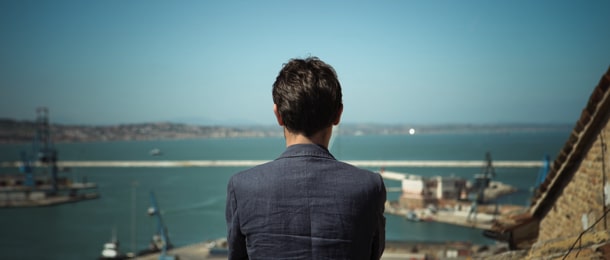
F: Your newest film, FOREIGN BODY, which was premiered in 2014, caused quite a commotion. Why?
K.Z.: Well, I never thought I could be so angry again, I thought, in old age, I would get more tolerant. But there it is: in the old days, we were really fighting for freedom, and today the young people are selling their freedom to the corporation. What for? They are selling their souls, not their work. So, this film is the voice of anger. Because human relationships are suffering because of this attitude, people become inhuman. But there were great protests against the film, because people like to work for the corporations, and for the material freedom they gain this way. And I also made references to Judeo-Christian ethics, which are not as dried up, as some think. So, that’s the bone of contention.
F.; So you were disappointed in global capitalism?
K.Z.: No, I never had any illusions, about the perfect system. I believe that every person has a space, and he has to be as human as possible. And the fabulous rich ones do not need to be so rich, to have a human space they can live in satisfactory.
 F.: Finally, a question about the ‘ordinary’ anti-Semitism in Poland. I have watched Jerzy Stuhr’s CITIZEN which I very much liked. I believe that this was the first Polish film to confront ‘ordinary’ anti-Semitism, for a very long time.
F.: Finally, a question about the ‘ordinary’ anti-Semitism in Poland. I have watched Jerzy Stuhr’s CITIZEN which I very much liked. I believe that this was the first Polish film to confront ‘ordinary’ anti-Semitism, for a very long time.
K.Z.: That is a very complex question. There are explanations, not excuses. Poland had a huge minority, nearly three million Jews, ten percentage of its population. This is incomparable with any other nation in Europe. The ugly part of anti-Semitism in Poland is that many peasants got richer because of the victims of the holocaust. This sense of guilt makes people aggressive again. You hate somebody you profited from.
F.: And the role of the Catholic Church in this question?
K.Z.: Until ten years ago, when Pope John-Paul II died, there was no anti-Semitism, but now, there are some parts of the Catholic Church, who regrettably, are indulging again in anti-Semitism.
A RETROSPECTIVE OF ZANUSSI’S FILMS ON MUBI | JANUARY – MARCH 2-18 | HIS LATEST FILM ETER IS IN POST PRODUCTION

 Dir.: Georgui Balabanov; Documentary with Christo, Jeanne-Claude, Anani Yavashev; Bulgaria 1996, 72 min.
Dir.: Georgui Balabanov; Documentary with Christo, Jeanne-Claude, Anani Yavashev; Bulgaria 1996, 72 min. “Stanislavsky said there are no small parts, only small actors”. Harvey Keitel proved this when he took the ‘unadvertised lead’ with a few lines and made it into a memorable one as ‘a pimp standing in the doorway’ in Martin Scorsese’s Taxi Driver. Scorsese had wanted him to be the campaign worker, but he took his cue from years of living in Hell’s Kitchen amongst the drug traffickers and sex workers of the area. Spending two weeks learning to be the pimp after having first playing the girl during rehearsals the words of the real life pimp still send chills down his body: “Remember. You love her”
“Stanislavsky said there are no small parts, only small actors”. Harvey Keitel proved this when he took the ‘unadvertised lead’ with a few lines and made it into a memorable one as ‘a pimp standing in the doorway’ in Martin Scorsese’s Taxi Driver. Scorsese had wanted him to be the campaign worker, but he took his cue from years of living in Hell’s Kitchen amongst the drug traffickers and sex workers of the area. Spending two weeks learning to be the pimp after having first playing the girl during rehearsals the words of the real life pimp still send chills down his body: “Remember. You love her”
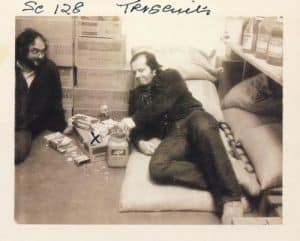 Stanley Kubrick, one of the greatest film makers of the 20th century, spent most of his later life working in England where he raised a family in the Hertfordshire town of Childwickbury, between St Albans and Harpenden, 35 minutes drive North of London. It was in the Norfolk Broads and Beckton, in the East End that he created the Vietnam scenes for Full Metal Jacket (1987), an orbiting space station for 2001: A Space Odyssey (1968), and Dr Strangelove’s war room (1964).
Stanley Kubrick, one of the greatest film makers of the 20th century, spent most of his later life working in England where he raised a family in the Hertfordshire town of Childwickbury, between St Albans and Harpenden, 35 minutes drive North of London. It was in the Norfolk Broads and Beckton, in the East End that he created the Vietnam scenes for Full Metal Jacket (1987), an orbiting space station for 2001: A Space Odyssey (1968), and Dr Strangelove’s war room (1964). Stanley Kubrick was most inventive in his introduction of revolutionary devices to his filmmaking, such as the camera lens designed for NASA to shoot by candlelight. His fascination with all aspects of design and architecture influenced every stage of all his films. He worked with many key designers of his generation, from Hardy Amies to Saul Bass, Eliot Noyes and Ken Adam.
Stanley Kubrick was most inventive in his introduction of revolutionary devices to his filmmaking, such as the camera lens designed for NASA to shoot by candlelight. His fascination with all aspects of design and architecture influenced every stage of all his films. He worked with many key designers of his generation, from Hardy Amies to Saul Bass, Eliot Noyes and Ken Adam. Dir.: Volker Schlöndorff, Margaretha von Trotta; Cast: Angela Winkler, Mario Adorf, Jürgen Prochnow, Dieter Laser, Heinz Bennett, Hannelore Hoger, Rolf Becker; Federal Republic of Germany 1975, 106’.
Dir.: Volker Schlöndorff, Margaretha von Trotta; Cast: Angela Winkler, Mario Adorf, Jürgen Prochnow, Dieter Laser, Heinz Bennett, Hannelore Hoger, Rolf Becker; Federal Republic of Germany 1975, 106’.
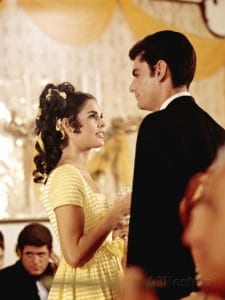
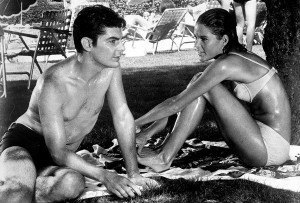
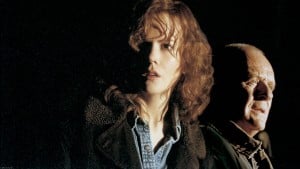
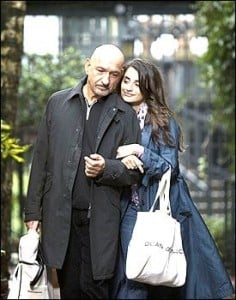

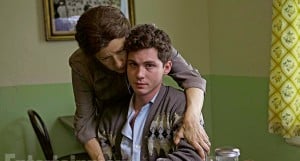
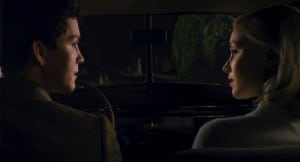

 This early success led to various roles in TV and a film career that flourished with his performance in Ron Shelton’s popular sports film Bull Durham (1988). Proof of his undeniable talent followed with his role in the drama Jacob ’s Ladder (1990), and Robbins went on to work with legendary indie director Robert Altman – taking the sardonic lead role in Altman’s The Player (1992) which won him a Golden Globe and the Best Actor at the Cannes Film Festival.
This early success led to various roles in TV and a film career that flourished with his performance in Ron Shelton’s popular sports film Bull Durham (1988). Proof of his undeniable talent followed with his role in the drama Jacob ’s Ladder (1990), and Robbins went on to work with legendary indie director Robert Altman – taking the sardonic lead role in Altman’s The Player (1992) which won him a Golden Globe and the Best Actor at the Cannes Film Festival. There followed appearances in the Coen brothers’ The Hudsucker Proxy (1994), another outing with Robert Altman (the comedy from the world of fashion Prêt-à-Porter, 1994), and his work with Frank Darabont on The Shawshank Redemption (1994), which was nominated for seven Oscars. In 1996 Dead Man Walking earned him an Oscar nomination for best director, while his partner Susan Sarandon won an Oscar for best actress. His next auteur outing, Cradle Will Rock (1999) above, which premiered at Cannes, explored the relationship between the individual artist and society during a tumultuous time in the U.S. though this time in another era. As with Dead Man Walking, Robbins produced, and the music was written by his brother David.
There followed appearances in the Coen brothers’ The Hudsucker Proxy (1994), another outing with Robert Altman (the comedy from the world of fashion Prêt-à-Porter, 1994), and his work with Frank Darabont on The Shawshank Redemption (1994), which was nominated for seven Oscars. In 1996 Dead Man Walking earned him an Oscar nomination for best director, while his partner Susan Sarandon won an Oscar for best actress. His next auteur outing, Cradle Will Rock (1999) above, which premiered at Cannes, explored the relationship between the individual artist and society during a tumultuous time in the U.S. though this time in another era. As with Dead Man Walking, Robbins produced, and the music was written by his brother David.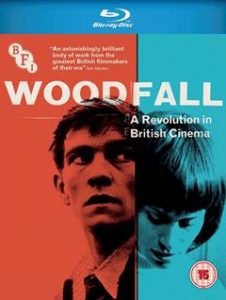 Woodfall Film Productions was founded in 1958 by English director Tony Richardson (1928-1991), the American producer Harry Saltzman (later of James Bond fame) and the English author and playwright John Osborne, whose play Look back in Anger was filmed by Richardson in 1959 as the opus number of the company that championed the British New Wave. So it’s only fitting that Richardson should finish the circle in 1984 with Hotel New Hampshire, creating a sub-genre of dram-com, which was later developed by Wes Anderson.
Woodfall Film Productions was founded in 1958 by English director Tony Richardson (1928-1991), the American producer Harry Saltzman (later of James Bond fame) and the English author and playwright John Osborne, whose play Look back in Anger was filmed by Richardson in 1959 as the opus number of the company that championed the British New Wave. So it’s only fitting that Richardson should finish the circle in 1984 with Hotel New Hampshire, creating a sub-genre of dram-com, which was later developed by Wes Anderson.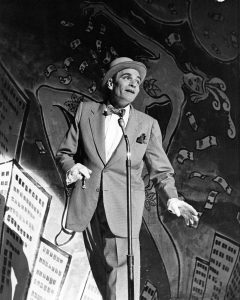 The Entertainer featured Laurence Olivier in the title role, reprising his stage role from the Royal Court, co-written by John Osborne from his own play. There is nothing heroic about Olivier’s Archie Rice: he is a bankrupt womaniser, exploiting his long suffering wife Phoebe (de Banzie) and using Tina Lapford (Field) – who came second in the Miss Britain contest – and her wealthy family to prolong his stage career. Not even the death of his son in the Suez conflict can deter him from his vain pursuit of a long dead career. Using his father – who dies on stage – for his own advantage, Archie sinks deeper and deeper. There is a poignant scene with his film daughter Jean (Plowright), whom he asks: “What would think, if I married a woman your age?” and Jean answers exasperated “Oh. Daddy”. At the end of productions, Olivier would marry Plowright, after his divorce from Vivien Leigh. Shot partly at Margate, this is a bleak portrait of show business, shot in brilliant black and white by the great Oswald Morris (Moby Dick, A Farewell to Arms).
The Entertainer featured Laurence Olivier in the title role, reprising his stage role from the Royal Court, co-written by John Osborne from his own play. There is nothing heroic about Olivier’s Archie Rice: he is a bankrupt womaniser, exploiting his long suffering wife Phoebe (de Banzie) and using Tina Lapford (Field) – who came second in the Miss Britain contest – and her wealthy family to prolong his stage career. Not even the death of his son in the Suez conflict can deter him from his vain pursuit of a long dead career. Using his father – who dies on stage – for his own advantage, Archie sinks deeper and deeper. There is a poignant scene with his film daughter Jean (Plowright), whom he asks: “What would think, if I married a woman your age?” and Jean answers exasperated “Oh. Daddy”. At the end of productions, Olivier would marry Plowright, after his divorce from Vivien Leigh. Shot partly at Margate, this is a bleak portrait of show business, shot in brilliant black and white by the great Oswald Morris (Moby Dick, A Farewell to Arms).  Set in a desolate Manchester, A Taste of Honey would make a star of the lead actor Rita Tushingham. She plays 17-year old school girl Jo, who is totally neglected by her sex-mad mother Helen (Bryan), who only has time for her fiancée Robert (Stephens). Jo gets pregnant by the black sailor Jimmy (Danquah), who soon leaves with his ship. Jo befriends the textile student Geoffrey, a brilliant Murray Melvin, who is not sure about his sexual orientation. He looks lovingly after her, before Helen returns, after having been rejected by Robert. She shucks Geoffrey out, and pretends to look after her daughter and the baby, whilst having one eye on the next, potential suitor. A Taste of Honey is relentlessly gloomy and discouraging. Photographed innovatively
Set in a desolate Manchester, A Taste of Honey would make a star of the lead actor Rita Tushingham. She plays 17-year old school girl Jo, who is totally neglected by her sex-mad mother Helen (Bryan), who only has time for her fiancée Robert (Stephens). Jo gets pregnant by the black sailor Jimmy (Danquah), who soon leaves with his ship. Jo befriends the textile student Geoffrey, a brilliant Murray Melvin, who is not sure about his sexual orientation. He looks lovingly after her, before Helen returns, after having been rejected by Robert. She shucks Geoffrey out, and pretends to look after her daughter and the baby, whilst having one eye on the next, potential suitor. A Taste of Honey is relentlessly gloomy and discouraging. Photographed innovatively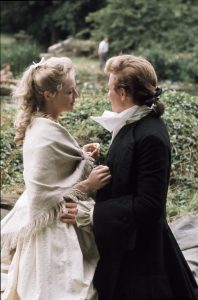 Nothing could be more different than Richardson’s next project, the historical romp Tom Jones, based on the novel by Henry Fielding. Albert Finney is the bumptious titular hero, who is nearly hanged due to the schemes by his adversary Bliflil (the debut for David Warner). With a great love story involving Sophie Western (York) and her father (Griffith), there are some great performances by Edith Evans, Joan Greenwood and Diane Cilento. Like his auteur Richardson, Lassally changes style effortlessly in this colourful wide-screen bonanza. It would garner an Oscar for Richardson, and was a huge success at the box office: the slender budget of £467000 pounds would result in a cool 70 million takings. AS
Nothing could be more different than Richardson’s next project, the historical romp Tom Jones, based on the novel by Henry Fielding. Albert Finney is the bumptious titular hero, who is nearly hanged due to the schemes by his adversary Bliflil (the debut for David Warner). With a great love story involving Sophie Western (York) and her father (Griffith), there are some great performances by Edith Evans, Joan Greenwood and Diane Cilento. Like his auteur Richardson, Lassally changes style effortlessly in this colourful wide-screen bonanza. It would garner an Oscar for Richardson, and was a huge success at the box office: the slender budget of £467000 pounds would result in a cool 70 million takings. AS Where better to attend a cinematic celebration of the built environment than Europe’s Architectural design capital Copenhagen which celebrates its 5th edition on May 3rd 16th, 2018. Copenhagen has repeatedly been ranked as the world’s most liveable city and is famous for its architecture. The festival has developed a programme appealing to professionals as well as ‘amateurs’ and is the biggest of its kind in Scandinavia presenting a large public programme of film screenings both in the open air, in cinemas and in private homes, seminars, debates, exhibitions and workshops. all taking place in Copenhagen, Aarhus and Aalborg.
Where better to attend a cinematic celebration of the built environment than Europe’s Architectural design capital Copenhagen which celebrates its 5th edition on May 3rd 16th, 2018. Copenhagen has repeatedly been ranked as the world’s most liveable city and is famous for its architecture. The festival has developed a programme appealing to professionals as well as ‘amateurs’ and is the biggest of its kind in Scandinavia presenting a large public programme of film screenings both in the open air, in cinemas and in private homes, seminars, debates, exhibitions and workshops. all taking place in Copenhagen, Aarhus and Aalborg.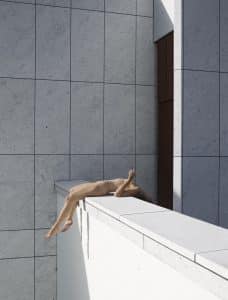
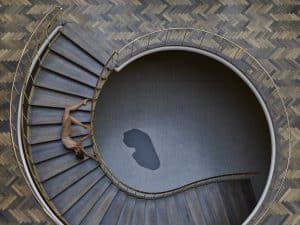 Once again this year the festival maintains a strong focus on the moving image media with a curated film programme, including film premiers, classics and a portrait series on among others starchitects Tadao Ando, Zaha Hadid and Lene Tranberg.
Once again this year the festival maintains a strong focus on the moving image media with a curated film programme, including film premiers, classics and a portrait series on among others starchitects Tadao Ando, Zaha Hadid and Lene Tranberg.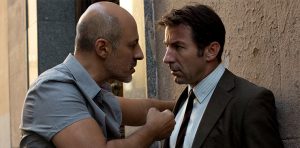 MAY GOD SAVE US | Que Dios nos perdone ****
MAY GOD SAVE US | Que Dios nos perdone **** THE BOOKSHOP ***
THE BOOKSHOP ***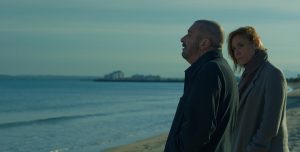 CAN’T SAY GOODBYE | No sé decir adiós ***
CAN’T SAY GOODBYE | No sé decir adiós *** ABRACADABRA
ABRACADABRA SUNDAY’S ILLNESS | La enfermedad de los domingos
SUNDAY’S ILLNESS | La enfermedad de los domingos LOTS OF KIDS, A MONKEY AND A CASTLE | Muchos hijos, un mono y un castillo
LOTS OF KIDS, A MONKEY AND A CASTLE | Muchos hijos, un mono y un castillo

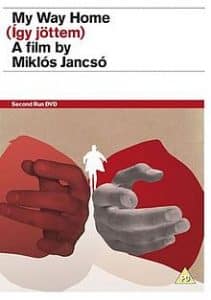 MY WAY HOME | Dir.: Miklos Jansco; Cast: Sergei Nikomenko, Andras Kozak; Hungary 1964, 108 min.
MY WAY HOME | Dir.: Miklos Jansco; Cast: Sergei Nikomenko, Andras Kozak; Hungary 1964, 108 min.






 CINEMA MADE IN ITALY returns to London’s Ciné Lumière, showcasing the latest releases from Italy complete with film-maker Q&A sessions. This year’s line-up includes eight new Italian films and a 1977 classic title
CINEMA MADE IN ITALY returns to London’s Ciné Lumière, showcasing the latest releases from Italy complete with film-maker Q&A sessions. This year’s line-up includes eight new Italian films and a 1977 classic title
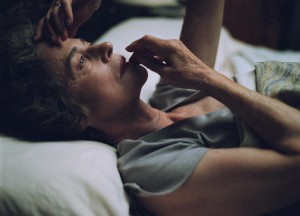
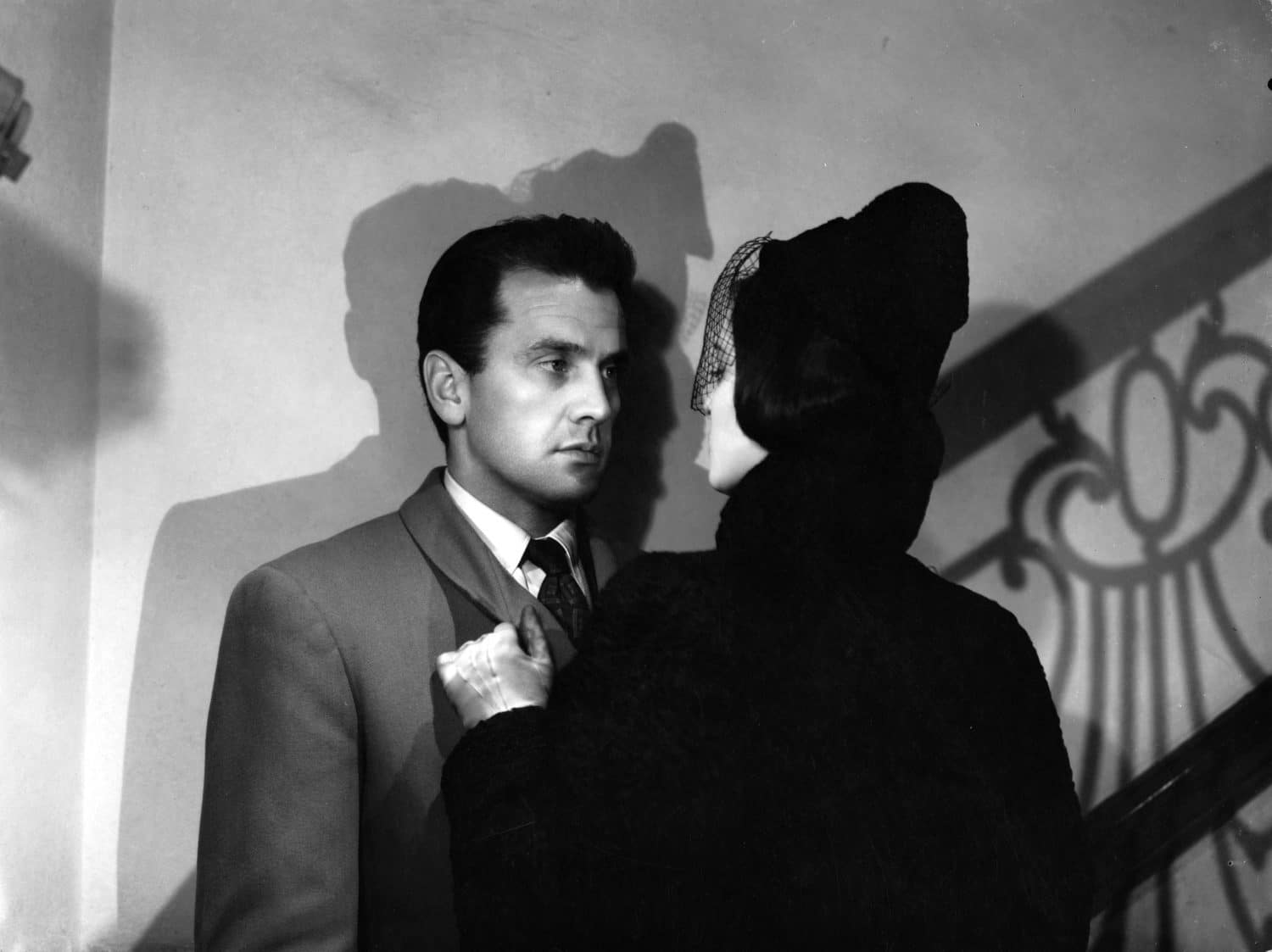
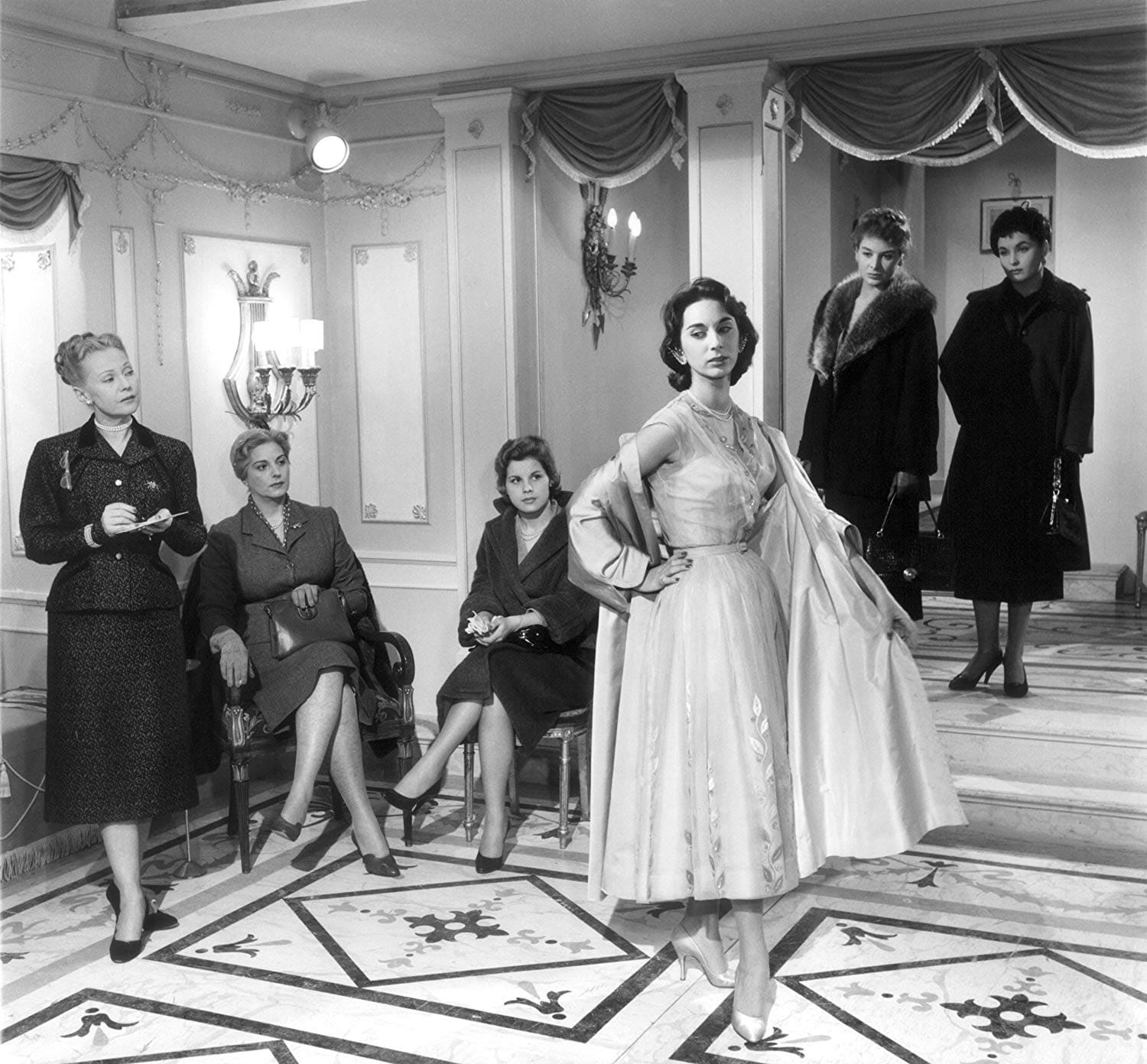
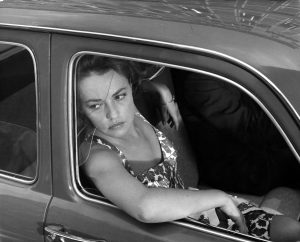 In LA NOTTE (1960) allows us to share a day in the company of the writer Giovanni and his wife Lydia. When their friend dies in a hospital, they realise that their own love for each other has also been dead for quite a while. Antonioni uses his characters like figures on a chess board. They are real, but at the same time cyphers. He does not tell their story, but follows their movements from one place to an another. There is no interconnection between them and their environment. They have lost all feeling for themselves, others and the outside world. Their world is cold and threatening. Antonioni offers no irony or pity. He is the surgeon at the operating table, and his view is that of the camera: mostly skewed over-head shots. It is impossible to love La Notte. Whilst Antonioni was the first director of the modern era, he is also its most vicious critic.
In LA NOTTE (1960) allows us to share a day in the company of the writer Giovanni and his wife Lydia. When their friend dies in a hospital, they realise that their own love for each other has also been dead for quite a while. Antonioni uses his characters like figures on a chess board. They are real, but at the same time cyphers. He does not tell their story, but follows their movements from one place to an another. There is no interconnection between them and their environment. They have lost all feeling for themselves, others and the outside world. Their world is cold and threatening. Antonioni offers no irony or pity. He is the surgeon at the operating table, and his view is that of the camera: mostly skewed over-head shots. It is impossible to love La Notte. Whilst Antonioni was the first director of the modern era, he is also its most vicious critic.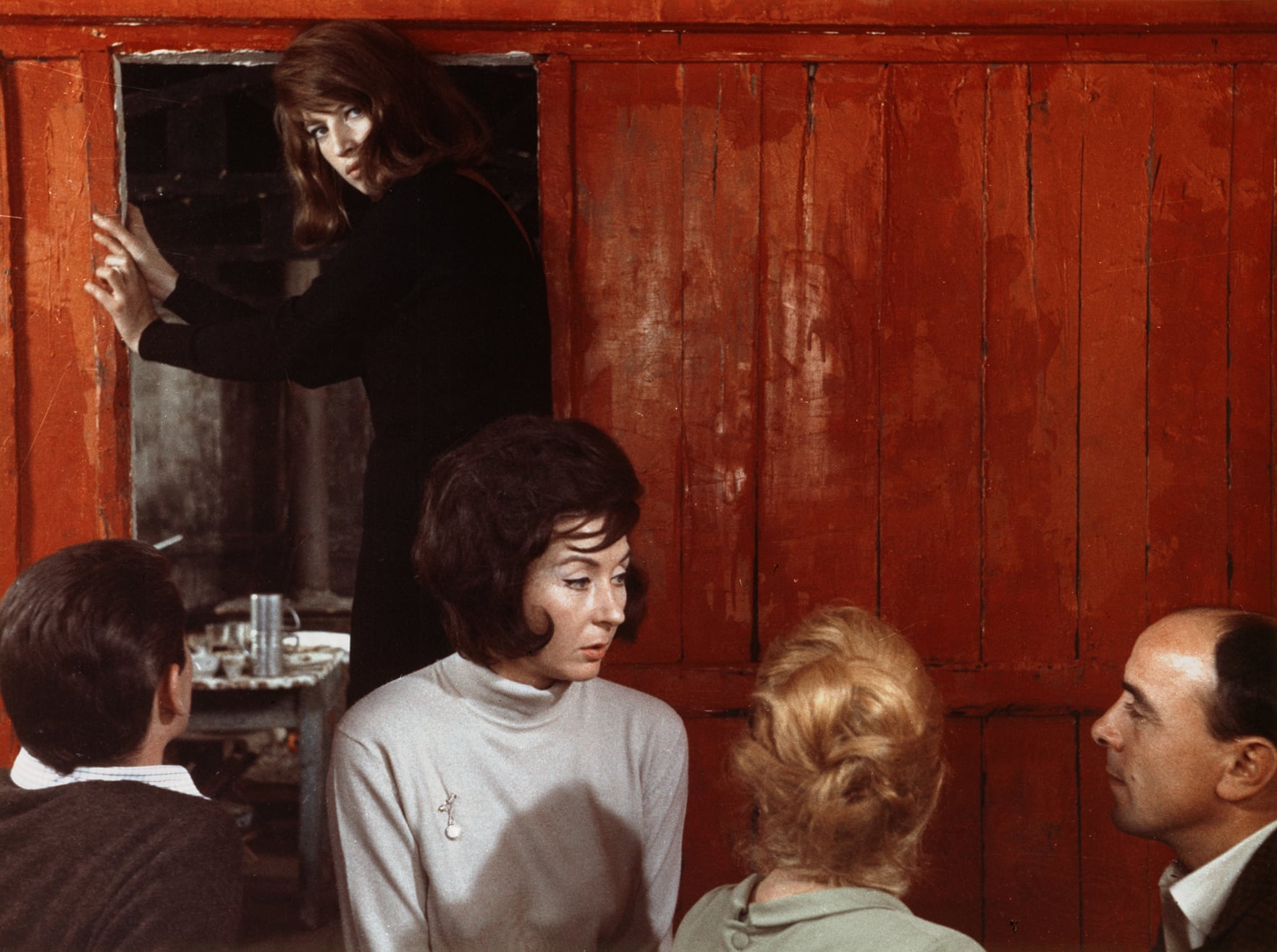

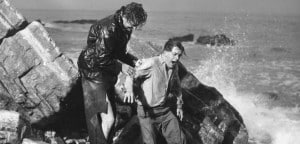
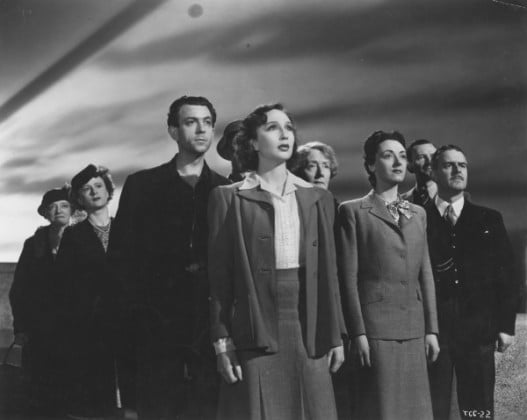
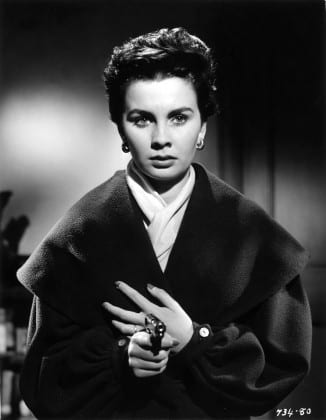
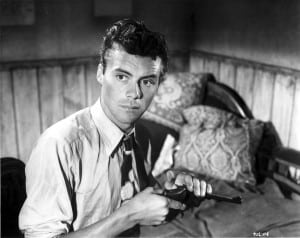


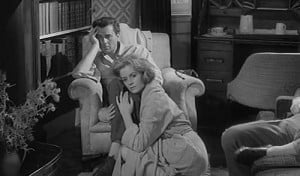


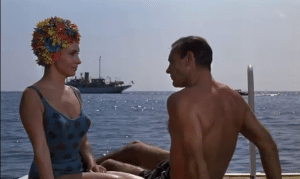
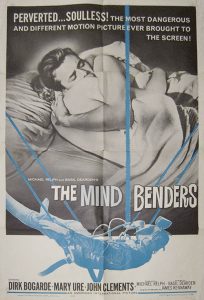
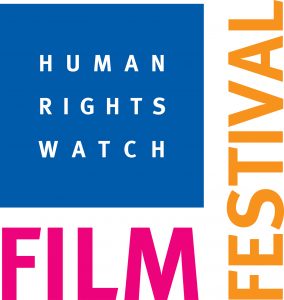 The 22nd edition of the London Human Rights Watch Film Festival opens in time for
The 22nd edition of the London Human Rights Watch Film Festival opens in time for 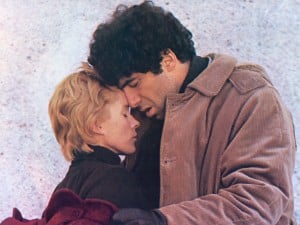
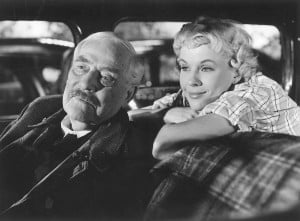 s such as The Seventh Seal (1957) and Wild Strawberries(1957), and ground-breaking TV series like Scenes From a Marriage (1973) to lesser known titles, and those scripted by Bergman and directed by his collaborators. All in all more than 50 films directed or written by Bergman, as well as several TV series, will screen at the BFI accompanied by an ambitious events programme, designed to bring Bergman and his work to life for a new generation. This will include discussions, immersive experiences and talent-led events.
s such as The Seventh Seal (1957) and Wild Strawberries(1957), and ground-breaking TV series like Scenes From a Marriage (1973) to lesser known titles, and those scripted by Bergman and directed by his collaborators. All in all more than 50 films directed or written by Bergman, as well as several TV series, will screen at the BFI accompanied by an ambitious events programme, designed to bring Bergman and his work to life for a new generation. This will include discussions, immersive experiences and talent-led events.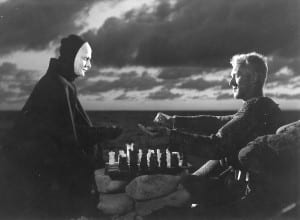

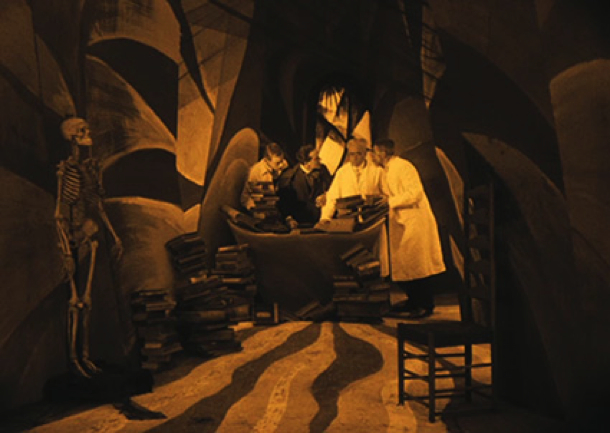
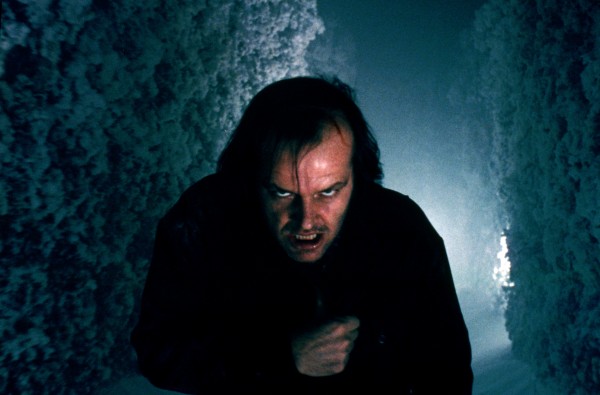


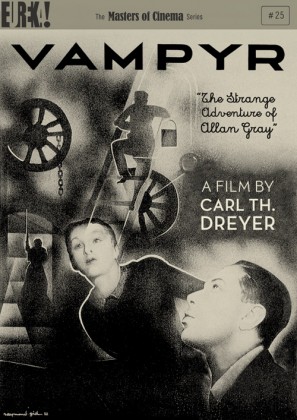 Danish director Carl-Theodor Dreyer (Ordet) is known for his austere and minimalist features.
Danish director Carl-Theodor Dreyer (Ordet) is known for his austere and minimalist features. 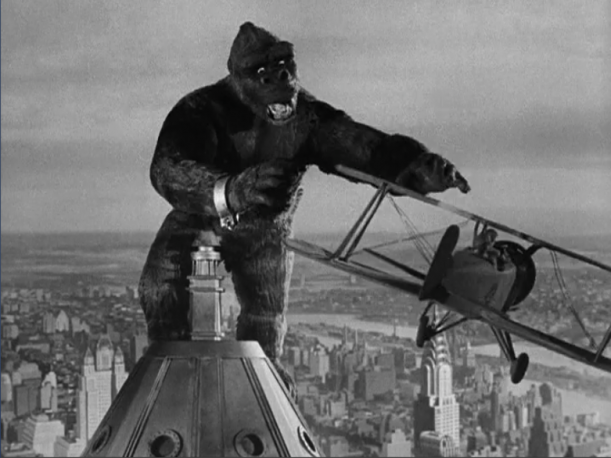
 US DRAMA –
US DRAMA – Filmmaker Maren Ade has created one of the most poignant and refreshingly humorous German arthouse comedy dramas of recent memory – it never drags despite its three-hour running time. Picturing the absurd and often awkward nature of family relationships, this is a life-affirming experience not to be missed, especially at Christmas time. After The Forest for the Trees and Everyone Else, Ade is working her way slowly but surely to the top as most of the most refreshing European writer directors around..
Filmmaker Maren Ade has created one of the most poignant and refreshingly humorous German arthouse comedy dramas of recent memory – it never drags despite its three-hour running time. Picturing the absurd and often awkward nature of family relationships, this is a life-affirming experience not to be missed, especially at Christmas time. After The Forest for the Trees and Everyone Else, Ade is working her way slowly but surely to the top as most of the most refreshing European writer directors around.. There’s something sad and awkwardly compulsive about this cautionary tale of a misguided intergenerational liaison between a lonely man and a glib young woman who meet in an island paradise. One of the best recent dramas about delusional love and its grim aftermath that perfectly epitomises the sinking realisation of being ‘over the hill’ on a holiday fling, while still holding on to the dream . Slim and but beautifully scenic and deeply resonant in its evergreen theme.
There’s something sad and awkwardly compulsive about this cautionary tale of a misguided intergenerational liaison between a lonely man and a glib young woman who meet in an island paradise. One of the best recent dramas about delusional love and its grim aftermath that perfectly epitomises the sinking realisation of being ‘over the hill’ on a holiday fling, while still holding on to the dream . Slim and but beautifully scenic and deeply resonant in its evergreen theme.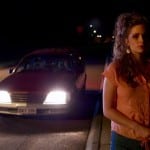 THRILLER –
THRILLER – 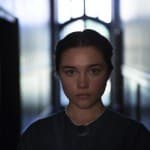 UK DEBUT –
UK DEBUT – 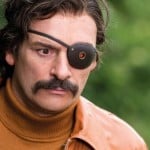 UK COMEDY –
UK COMEDY –
 Hopkins’ fraud of a film is full of middle-aged cyphers floating around in a fantasy world of the Seventies where they meet for coffee mornings and discuss worthy causes. But in the real place, this lot passed on decades ago to be replaced by the likes of Hugh Skinner’s fundraising nerd or the smiling Romanians touting The Big Issue at every street corner. Robert Festinger’s script teeters from crass to cringeworthy with no laughs to be had, and a score that jars. Hampstead is utterly specious and hollow – even Diane Keaton can’t save it.
Hopkins’ fraud of a film is full of middle-aged cyphers floating around in a fantasy world of the Seventies where they meet for coffee mornings and discuss worthy causes. But in the real place, this lot passed on decades ago to be replaced by the likes of Hugh Skinner’s fundraising nerd or the smiling Romanians touting The Big Issue at every street corner. Robert Festinger’s script teeters from crass to cringeworthy with no laughs to be had, and a score that jars. Hampstead is utterly specious and hollow – even Diane Keaton can’t save it. A fantastic box set that brings together dazzling high def print of some of the best films in the crime genre: THE DARK MIRROR (1946) starring Olivia de Havilland; Fritz Lang’s SECRET BEYOND THE DOOR (1947) with Joan Bennett and Michael Redgrave; FORCE OF EVIL (1948) directed by the underrated Abraham Polonsky; and Cornel Joseph H Lewis’ THE BIG COMBO (1955); with its terrific score by David Raksin with dynamite duo Cornel Wilde and Jean Wallace. The dual format edition comes with a hardback book on the films. MT
A fantastic box set that brings together dazzling high def print of some of the best films in the crime genre: THE DARK MIRROR (1946) starring Olivia de Havilland; Fritz Lang’s SECRET BEYOND THE DOOR (1947) with Joan Bennett and Michael Redgrave; FORCE OF EVIL (1948) directed by the underrated Abraham Polonsky; and Cornel Joseph H Lewis’ THE BIG COMBO (1955); with its terrific score by David Raksin with dynamite duo Cornel Wilde and Jean Wallace. The dual format edition comes with a hardback book on the films. MT